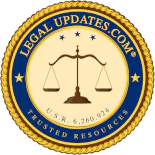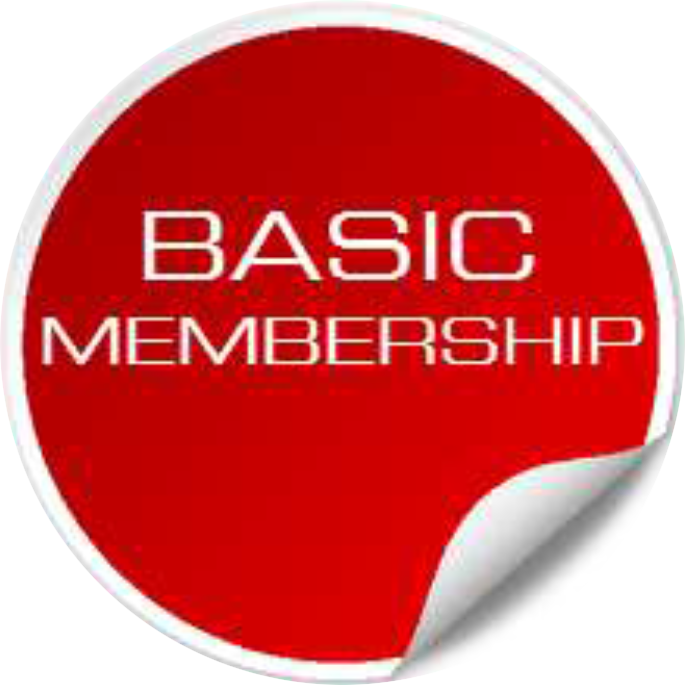
Free Speech, the First Amendment, and Time, Place and Manner Restrictions in Public Spaces
- First Amendment freedom of speech
- Public forums and the First Amendment
- Free speech activities
Whether a person may constitutionally exercise his or her constitutional First Amendment free speech (or California Speech Clause) rights at a specific location depends upon whether the location at issue is recognized as a public forum.
The Sacramento Hmong New Year Organization leased the Cal Expo fairgrounds to host the group’s 2018 Hmong New Year Festival in 2018. (The Hmong people are an indigenous group originally from East and Southeast Asia.) The festival took place over four days in the fall of that year and attracted nearly 30,000 attendees. Vendors paid to rent booths and attendees were required to purchase a ticket for entry.
Burt Camenzind is an Evangelical Christian who hoped to spread the message of his faith at the festival. He arrived at the fairgrounds wearing a vest covered in pockets, each filled with custom coins bearing biblical verses and other religious messages, some in the Hmong language. Camenzind intended to distribute the coins to festival attendees as he talked to them, one-on-one, about his religion.
The Cal Expo is owned by the state of California Exposition and State Fair Fairgrounds in Sacramento County. About half of the 800-acre property is surrounded by fencing, within which are various indoor and outdoor event facilities, and is accessible only through entry gates. The area outside of the fence largely consists of parking lots and sidewalks leading to the gates. The Cal Expo Police Department provides security for all events that take place on the grounds.
Upon Camenzind’s arrival, his bulging pockets attracted the attention of the Cal Expo Police. Cal Expo officers told him he could distribute his tokens only from designated “Free Speech Zones,” located just outside the entry gates, and not from inside the gated-off festival itself. This was in accordance with Cal Expo’s “Free Speech Activities Guidelines” (the “Guidelines”) which govern all events at the fairgrounds. The Guidelines, in general, prohibit attendees from leafletting, picketing, or gathering signatures—collectively described as “free speech activities”—within the enclosed portion of the fairgrounds.
For privately hosted events, such as the Hmong New Year Festival, organizers typically prohibit attendees from soliciting other attendees to preserve value for those vendors who pay to rent booths. The Guidelines also restrict free speech activities outside the Expo’s gates to designated “Free Expression Zones,” located directly outside the entry gates, and available at no cost on a first-come, first-served basis. Anyone entering the enclosed portion of the fairgrounds must walk within a few dozen feet of these zones.
But Camenzind, who wished to enter the fenced-off areas to distribute his tokens, was not satisfied with having to remain in a Free Expression Zone. So he purchased a ticket and entered along with all the other festival attendees. Caught by the Cal Expo Police handing out his tokens, he was 86’d from the park. Asked if he could then use the “Free Expression Zones,” the officers told him “no,” that he had to leave the grounds altogether.
Camenzind filed suit in the Sacramento Superior Court (subsequently removed to the federal district court on the Cal Expo’s motion), arguing that the Cal Expo’s rules and his removal from the park violated the First Amendment of the United States Constitution and the Speech Clause of the California Constitution. The federal district (trial) court first granted Camenzind’s motion for summary judgment on the issue of the Cal Expo Police Officers’ refusal to allow him to use the Free Expression Zone after he’d been caught passing out his tokens inside the park. But otherwise, the federal district court ruled against Camenzind, finding the Cal Expo’s Guidelines to be constitutional; i.e., that they did not violate Camenzind’s right to free expression under the United States or California Constitutions. Camenzind appealed.
The Ninth Circuit Court of Appeal, in a 2-to-1 decision, affirmed. The dissenting opinion did not disagree with the majority, other than to suggest they return the case to the trial court for further evidence.
The issue on appeal was whether the Cal Expo (both within and outside its gates) constitutes a “public forum” under the circumstances where the property is being rented for a privately organized event. Secondly, in light of that determination (as discussed below), the issue becomes whether the restrictions imposed by the Cal Expo Guidelines were constitutionally permissible.
General Rules
The general principles are well-settled, if not easy to understand. It is a rule of law that the First Amendment reflects this country’s “profound commitment to the principle that debate on public issues should be uninhibited, robust and wide-open.” (New York Times Co. v. Sullivan (1964) 376 U.S. 254, 270.)
The First Amendment affords special protection to “places which by long tradition or by government fiat have been devoted to assembly and debate.” To ascertain what limits, if any, may be placed on protected speech, courts often focus on the “place” where that speech is held, while considering the “nature of the forum the speaker seeks to employ.” (Frisby v. Schultz (1988) 487 U.S. 474, 479.) The issue then becomes whether the place chosen by the speaker is to be classified as a “public forum,” i.e., where the right to express one’s opinions and ideas is protected by the First Amendment. And then, even if it is a public forum, “the government may (still) impose reasonable restrictions on the time, place or manner of protected speech.” These time, place and manner regulations “must be content neutral, narrowly tailored to serve a significant governmental interest, and leave open ample alternative channels for communication of the message.”
Such areas, sometimes referred to as “public fora,” facilitate the free exchange of ideas essential to our democracy. Also, it must also be noted that the government may create new “public fora” by intentionally designating properties for expressive purposes The court described some traditional examples of public fora to include streets, parks and sidewalks—publicly owned spaces which, for “time out of mind, have been used for purposes of assembly, communicating thoughts between citizens, and discussing public questions.” But despite this, “protected speech is not equally permissible in all places and at all times.” (Cornelius v. NAACP Legal Def. & Educ. Fund, Inc. (1985) 473 U.S. 788, 799.)
First Amendment and a Public Forum
Camenzind argued on appeal, as he did in the trial court, that the Cal Expo fairgrounds in their entirety—in and outside the gates—constitute a “public forum,” entitling his speech to the most robust protection of the federal and state constitutions. In other words, he believed that restricting him to the “free speech” area alone, outside the gates, violated his First Amendment rights. The Ninth Circuit Court of Appeal disagreed.
In a very long, detailed analysis, the court looked at the issue of what is, and what is not, a constitutionally protected “public forum,” both under federal law and the “sometimes...different” California standards. In Camenzind’s suit, it was unclear whether he was challenging both his having been expelled from within the gates and the subsequent denial of his right to use the “Free Expression Zones,” or just the former. So, the court discussed both.
In general, when determining whether a location is a traditional public forum for First Amendment purposes, a court is to consider three factors: “(1) the actual use and purposes of the property, particularly its status as a public thoroughfare and availability of free public access to the area, (2) the area’s physical characteristics, including its location and the existence of clear boundaries delimiting the area and (3) traditional or historic use of both the property in question and other similar properties.” (Wright v. Incline Village General Improvement District (9th Cir. 2011) 665 F.3rd 1128, 1135.)
In this case, the court found that none of these factors favored treating the enclosed portion of the fairgrounds as a traditional public forum. First, the space in issue (inside the enclosed gates) does not serve as a public thoroughfare; people have to pass through a security checkpoint and buy a ticket to get in. Otherwise, it is locked up for most of the year. Users, such as the Hmong, have to pay rent for the privilege of using it. The property is thus in no sense “continually open” to the public as, for example, a park or public square. Also, the boundaries of the enclosed area are clearly marked by the fencing surrounding it. And lastly, there is nothing to suggest that “access to [the forum] ha[s] been granted as a matter of course to all who s[eek] to distribute material.”
The court determined, therefore, that inside the gates of the fairgrounds is not a “public forum” entitling Camenzind to use it to spread his message.
Outside the gates (i.e., the remaining 400 acres used for parking and walkways) is a closer question. But Cal Expo in effect conceded this issue when it created the “Free Expression Zones” which, per the court, take up several hundred feet just outside the entry gates. These zones, the court concluded, “undoubtedly constitute public fora.”
California Speech Clause
Despite this ruling, the court declined to find whether under the traditional federal standards Camenzind was entitled to use them, determining instead that under the California standards, he was in fact so entitled. The California Speech Clause provides as follows: “Every person may freely speak, write and publish his or her sentiments on all subjects, being responsible for the abuse of this right. A law may not restrain or abridge liberty of speech or press.” (Cal. Const. art. I, sec. 2(a).)
California has developed its own “extensive body of case law,” applying this state constitutional provision to the issue of free speech and public forums. For instance, in some settings, the “California Speech Clause” treats privately controlled properties as public fora. One such example involves privately owned shopping centers that are not public fora for purposes of the federal First Amendment, but are under the California Speech Clause. (See Pruneyard Shopping Center v. Robins (1980) 447 U.S. 74, 81.)
However, with the Ninth Circuit here recognizing that “California’s public forum test, and how that test differs from its federal counterpart, are not abundantly clear,” the court concluded (after a long and painful dissection of California’s rules as they differ from the federal standards) that Camenzind was in fact entitled to exercise his free speech rights in the Cal. Expo’s Free Expression Zones. (See Park Management Corp. v. In Defense of Animals (2019) 36 Cal.App.5th 649, as the controlling authority.)
The Cal. Expo Police, therefore, violated his right to do so when they told him that he had forfeited this right after they caught him inside the gated areas passing out his tokens. Applying the California standard, the court upheld the district court’s ruling that the Free Speech Zones outside the Cal Expo’s gated-off area did in fact constitute a public forum under the Speech Clause, and that Camenzind should not have been denied the right to use it as such.
Summary
The court held that Camenzind was lawfully prevented from distributing his tokens and advocating his religious beliefs within the gated, ticketed, area of the fairgrounds. At the same time, the Free Speech areas, which were content-neutral because they are allocated on a first-come, first-served basis, while at the same time served the “substantial state interest” of preventing congestion in that area by “confining distribution, selling, and fund solicitation activities to fixed locations,” provided him with the ideal place to accomplish his goals.
The district court’s rulings on these issues, therefore, were upheld.
So why am I throwing all this complicated civil law stuff at you, as a law enforcement officer
I briefed this case because it describes a situation similar to what you may someday become involved with. And it is important that you remember that it is a civil issue and that you treat it accordingly. At some point in your career (likely more than once), you will be called to a shopping center, a big box store, or some similar establishment (e.g., Target, Sears, Safeway, etc.), and be asked by the store’s representative (i.e., a security guard or manager) to arrest a “trespasser” who insists on setting up a card table at a store’s entrance and passing out leaflets or collecting signatures despite the “trespasser” being told that it is private property and that he needs to take his card table and literature elsewhere.
The store representative is likely to wave some case decision under your nose (e.g., Pruneyard Shopping Center v. Robins, supra, cited above), telling you that it supports his or her position.
But what you need to recognize is that the Pruneyard is a civil case, with a complex (as in the above case) decision reached by a civil court after an extensive evidentiary hearing. You, as a responding peace officer, are simply not qualified nor equipped to determine whether Pruneyard, or any other similar case decision, applies to your specific situation. Every situation is different. Every situation requires a detailed analysis of the fact-specific circumstances relevant to the facts with which you are confronted. Every situation is subject to a flexible “time, place, and manner” analysis that you simply are not equipped to evaluate. Also, California’s trespass statutes (i.e., P.C. § 602) don’t resolve the issue, there being no such thing as a simple “P.C. § 602/Trespass,” and none of the trespass subdivisions apply.
Your response, therefore, should be for the store representative, or whoever else it is with whom you might be dealing, to file the appropriate civil action in court if they wish to prevent the leaflet distributor/signature collector from plying his or her trade on the property. On this issue, I have compiled over the years an extensive 61-page memo on this subject (and other related topics) which I will e-mail you upon request. (Note my new e-mail address: RCPhill101@yahoo.com.)
If you’ve already gotten this memo from me, note that I update it with new materials about once every month or two. So, you might want to ask for a new copy.






